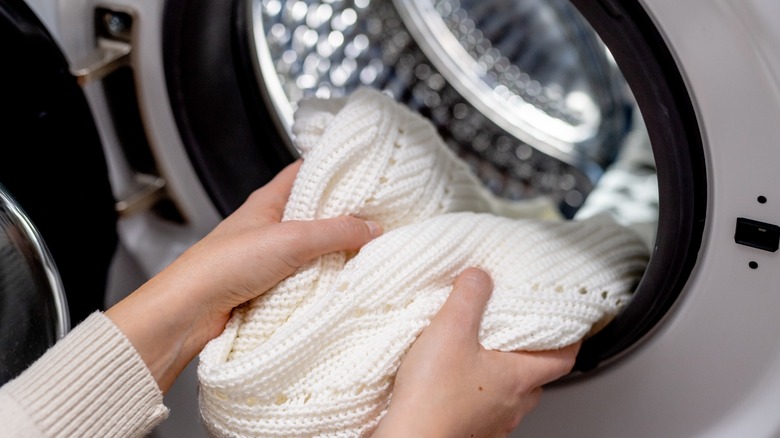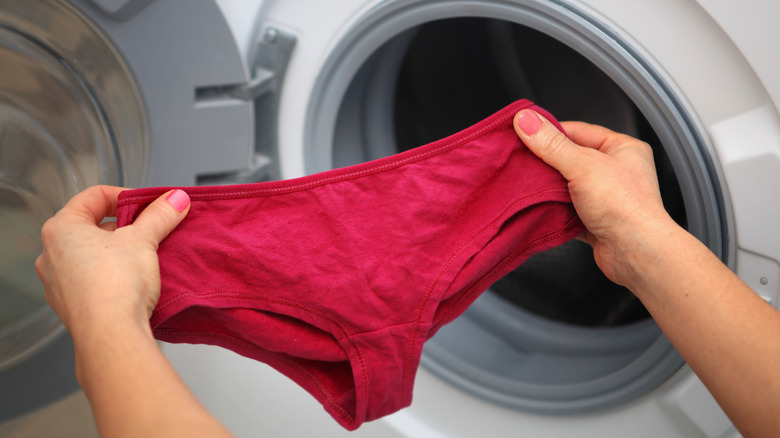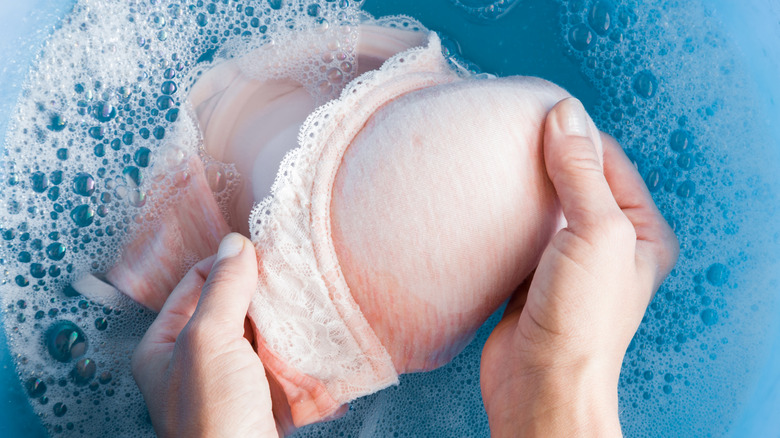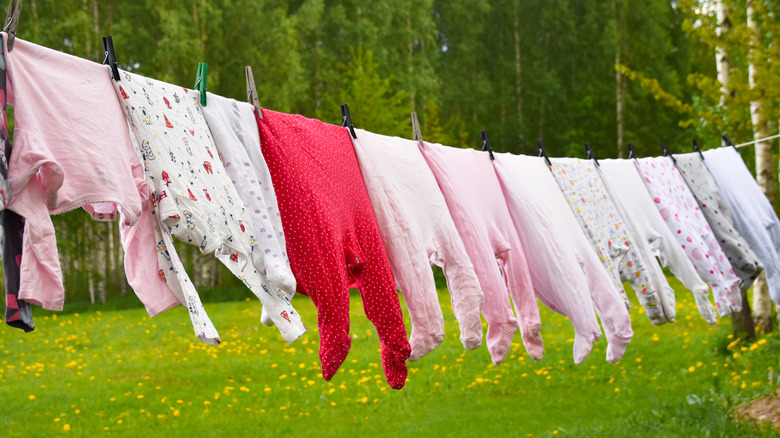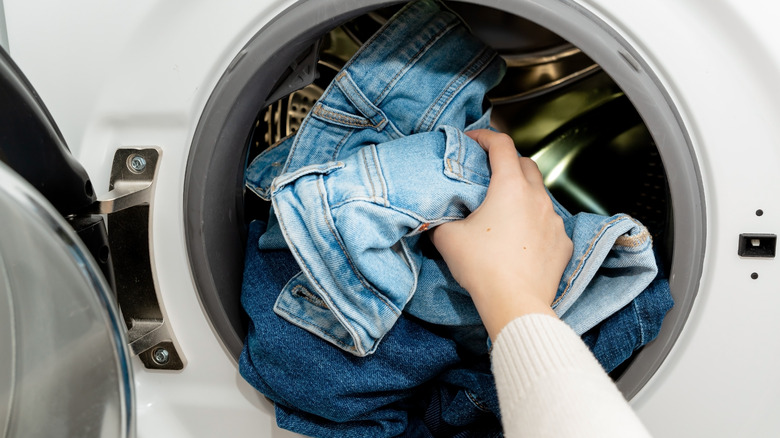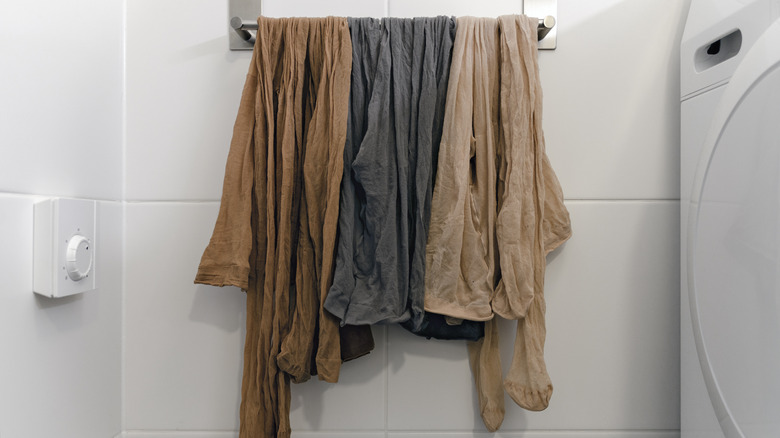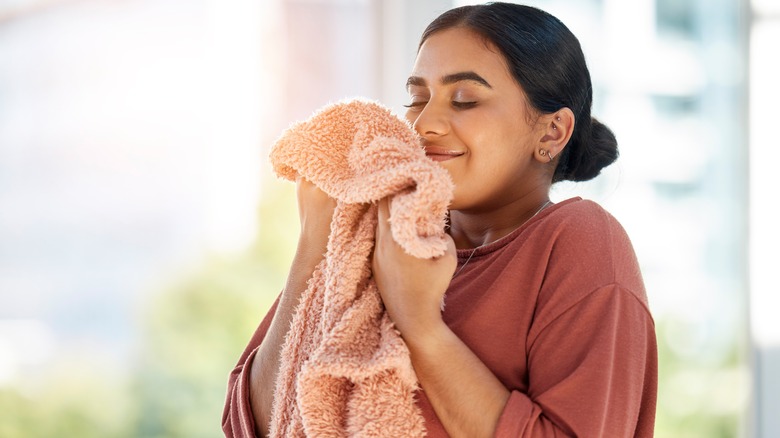How Often You Should Be Doing Laundry Based On The Clothing Type
When it comes to doing laundry, you're likely committed to a routine: Wait until there are enough clothes piled up in your laundry bin, separate whites from colors, toss in a load, throw in a Tide pod, and wait for your clothes to smell as fresh as ever. However, the type of clothing you're working with can tell you a lot about how often you should be doing your laundry. Between towels, t-shirts, shorts, jeans, and bras, it's not just funky odors that indicate when your clothes should be washed. It's also important to consider factors such as fabric, usage, and hygiene.
Washing our clothes frequently or infrequently is a choice we make based on our lifestyle. "People tend to over wash and 'over hygiene' themselves, because especially in America, we have a luxury of being able to do all that stuff all the time," dermatologist Dr. Anthony Rossi told CNN. On the contrary, we go days without washing our most delicate and bacteria-harboring clothing simply to wait for a substantial load. Lucky for you, we've compiled a rundown on how frequently you should be washing your clothes to improve your laundry routine.
Underwear after every use
Underwear is the one item of clothing that harbors the most bacteria due to factors like sweat. Unlike many of our clothes, they shouldn't be re-worn beyond one use. Once you've worn fresh underwear for a day, toss it into your laundry bin or immediately into the washer and grab a new pair. Since underwear requires washing after one use, you may benefit from having multitudes of pairs so that you don't run out before laundry day.
Bras after three to four wears
Bras can be washed slightly less frequently than underwear, especially during cold seasons when you're less susceptible to sweat. After three or four wears, fill a pool of soapy water in your sink and individually hand wash your bras — unlike most fabrics, bras are extremely delicate and can be damaged if thrown into a washing machine. During warm seasons, you may be inclined to wash bras more frequently since they'll harbor higher levels of sweat and bacteria.
Pajamas every few days depending on season
We're not always in control of our body's homeostasis, especially when we drink alcohol, suffer from anxiety, or just sleep in a warm environment — and our pajamas are especially prone to our nighttime sweats. Additionally, seasonal changes can contribute to our body temperature while sleeping and cause us to sweat through our PJs. Depending on your environment, it's best to wash your pajamas once or twice a week.
Jeans once every two weeks
Luckily, not all fabrics require a weekly wash. For example, jeans are traditionally made with denim, a material that can be quite rugged and only requires a bi-weekly wash, or after every four to five wears. Similarly, high-quality denim can call for an extremely irregular wash routine that can go as far as six weeks. While you'll likely aim for a bi-weekly wash cycle, be sure to check the label to ensure you're following the right protocol.
Leggings after every use
While many legging wearers are flexible with their wash cycle, leggings should ideally be washed after every use. Due to their tight fit, leggings are yet another piece of clothing that faces the brunt of our daily sweating, anxiety, and activities. Overwearing your leggings can also cause them to tear at the seams — to avoid this, consider throwing your leggings into a load of laundry after a day of wearing them.
Towels once or twice a week
We typically use our towels to wrap ourselves warm after exiting the shower. Leaving your damp towel to be air-dried can create the perfect conditions for bacterial growth, which can cause towels to smell slightly of mildew. To keep your towels fresh, they should be thrown in the wash at least once or twice a week, and ideally, after every two to three uses. Depending on the regularity of any musty odors, you may wash them more frequently to ensure the moisture isn't harboring any unwelcome bacterial growth.
Socks after every use
Last but not least, the fabric that keeps our feet warm and protected: socks. Much like underwear, socks come into close contact with our sweat and odor-releasing glands. They're also typically made with thin — and therefore delicate — fabric that can't withstand more than one wear without a wash. After a long day of wearing a pair of socks, be sure to toss them into a load of laundry before you wear them again. Much like underwear, you may benefit from a large collection of socks.
